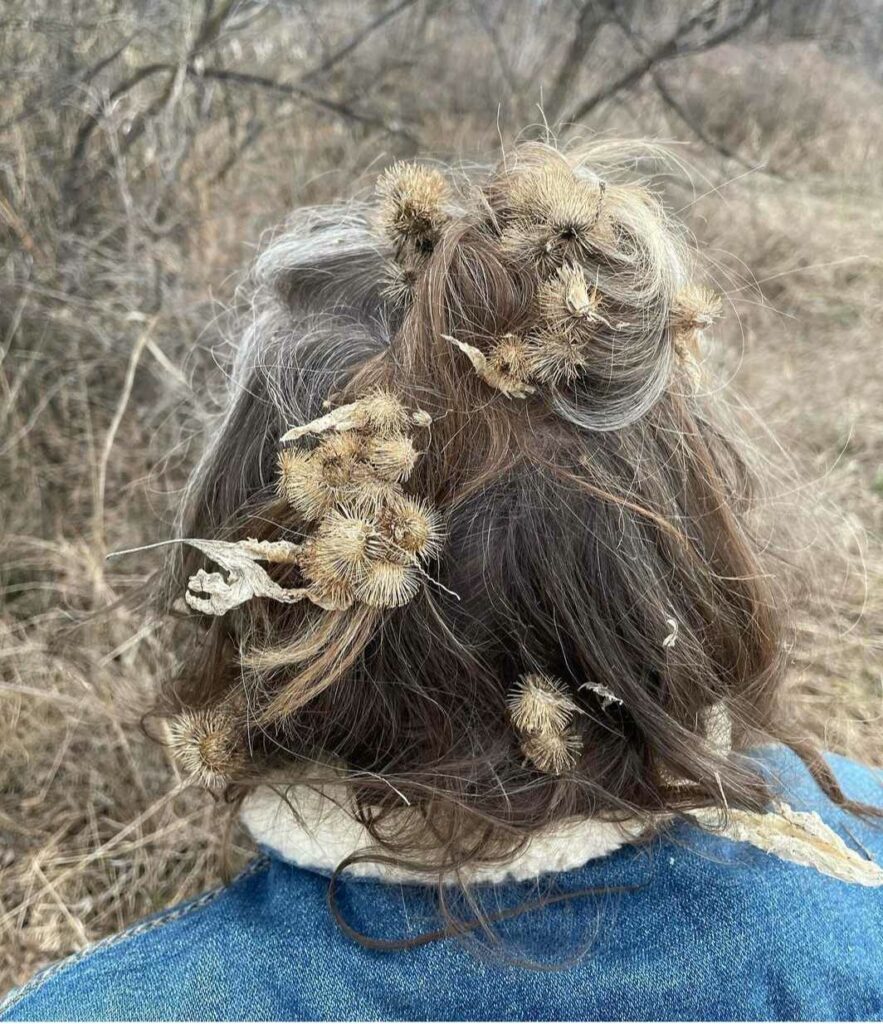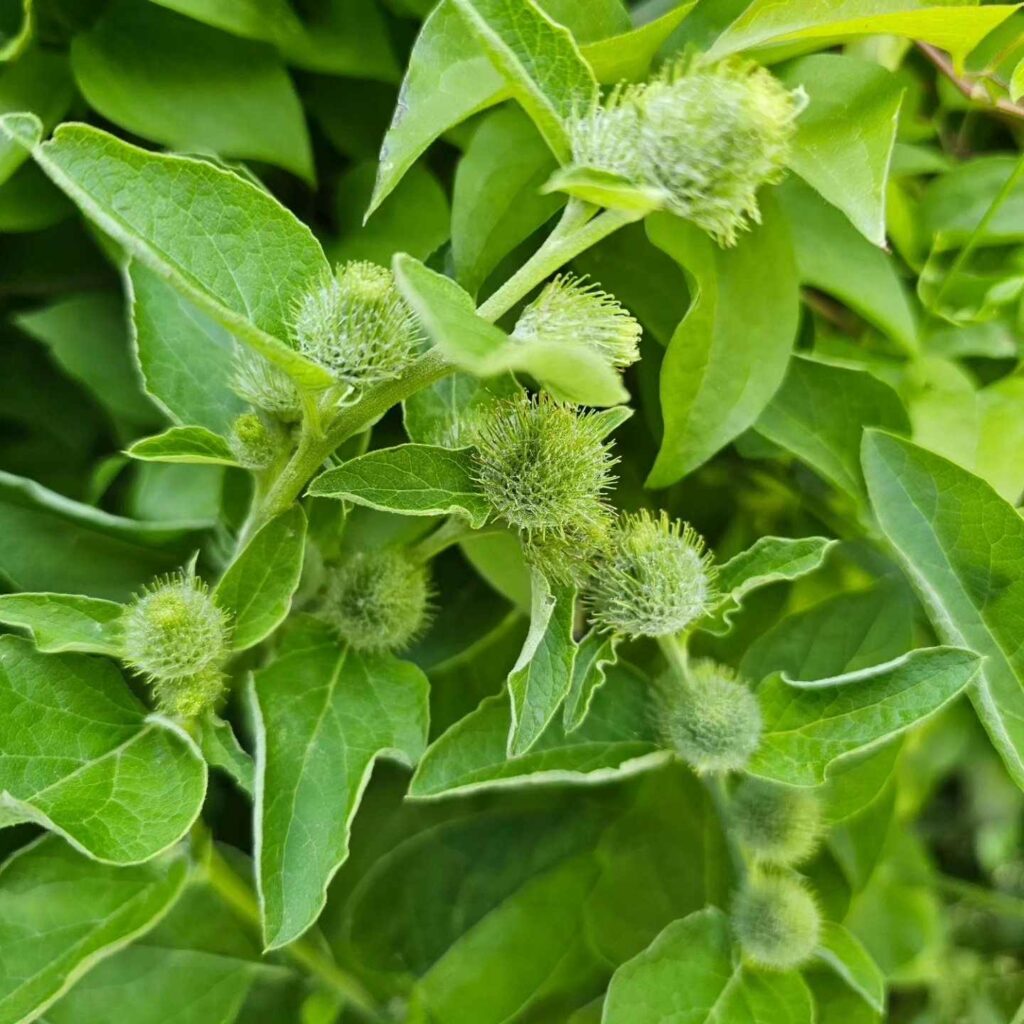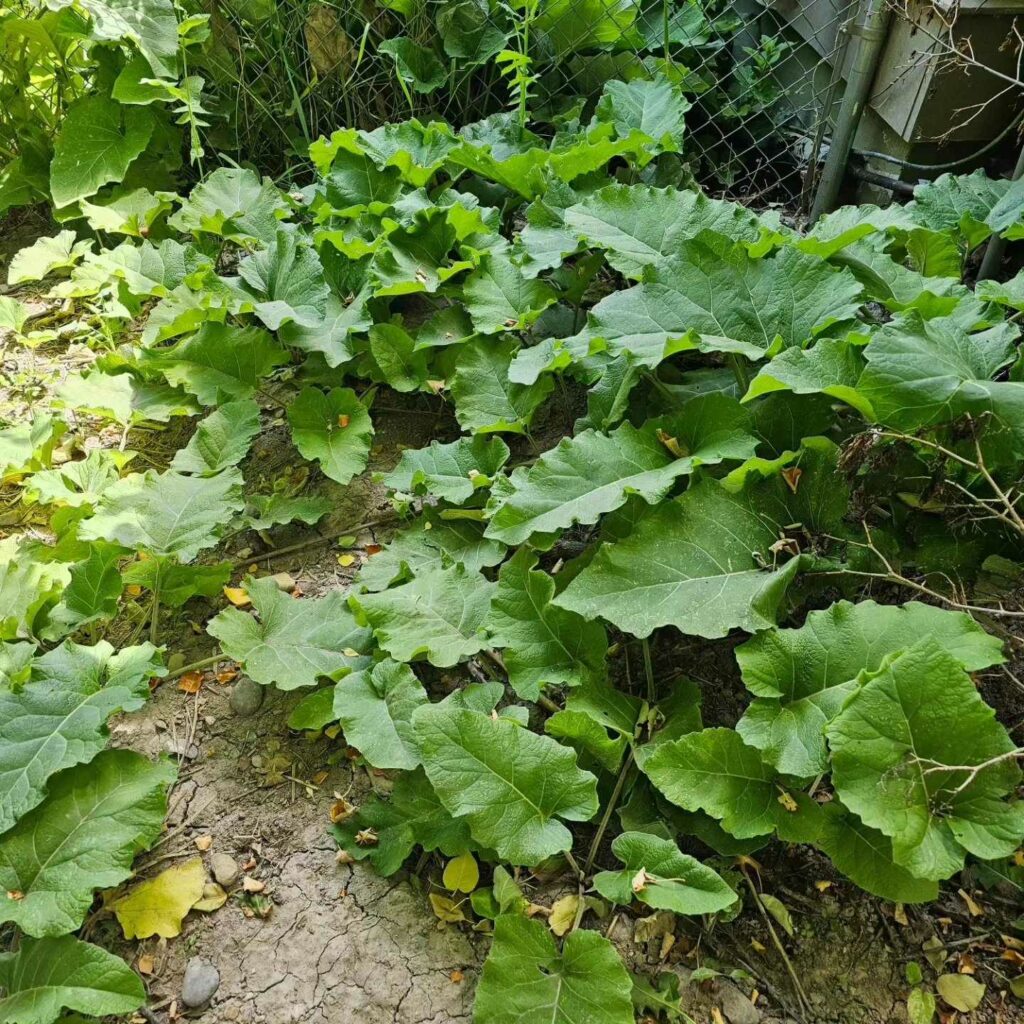Burdock – Nature’s Velcro
Burdock is an unassuming medicinal herb with powers in her seeds, leaves and root. Arctium lappa is part of the Compositae family of plants. Some common names for Burdock are burr seed, cockelbur, grass burdock, hardock, hareburr, beggar’s buttons, hurr-burr and turkey burrseed.
The burr this plant produces after flowering is some of the most powerful Velcro you’ll come across in nature, as exhibited by my adorable friend Aimee. I fully agree with my herbal tarot that these flower heads remind us not to take life too seriously.


Identifiers
This biennial plant found in the Northern US and Europe along roadsides, fences, waste places and populated areas is easy to identify. It looks a lot like rhubarb, the leaves do at least. During the first year a burdock plant grows it only has basal leaves. The leaves are green on top and bit hairy, and they have a grayish tint on the underside. The second year burdock grows a long stem with wooly branches and thistle like blooms. The flowers are a purple color and cluster from July to September. In the fall, the flowers turn to light brown sticky burrs. ^^ Check Aimee. ^^
The flowers below are early blooms. They turn from green to purple very quickly, within just a few days. The examples pictured are very sticky! Ready to cover your sweater or dog’s fur.



This is what the early basal leaves look like in my yard. Give them an inch…

Herbal Actions
Burdock supports the respiratory and digestive/elimination systems in the body. It is sometimes used as an aphrodisiac, alterative, diuretic, diaphoretic, antispasmodic, astringent, carminative, cholagogue, hemostatic, tonic and nutritive.
How do we use Burdock in our Family? + Historical Uses
I love using plants spiritually and emotionally. This plant is one that I use when I need to let emotions flow more freely. The Spirit of Herbs recommends using burdock to help with anger, aggression, bias, stagnation and discontent. I love carrying a bit of a plant around with me in my herbal pouch or just keeping a sprig on my desk, nearby.
I’ve had a decoction made from this herb when I have canker sores. I typically get them during certain times of the month, I think it is due to hormonal shifts.
Historical Uses:
Burdock is often used for skin disease (even common acne), blood purification and as a blood tonic, and for urinary tract support. The kidneys, liver and lymph can all benefit from burdock. She nudges your body to eliminate toxins that aren’t benefiting you. Rheumatism (arthritis), sciatica, lumbago, gout, reproductive issues, hypertension, fever, boils, styes and infection can all be reason to give this plant a try.
Meet Burdock
If our YouTube video isn’t working (above) we meet Burdock in person here.
The root holds a lot of the magic, and can be harvested pretty easily. I pulled this one out of the earth in my yarden. To make a decoction, soak the root (chopped up) for a few hours, then boil for minutes and drink.
Enjoy!
Psst: Remember I’m not doctor. I just like to share historical uses of plants and ways that I love to use them. Please take all of my written and spoken word to your provider before putting into action.
